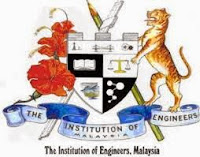Three slammed over finwall tragedy
GEORGE TOWN: An incompetent engineer, a irresponsible one and a neglectful senior civil servant have come under fire in the report on the collapse of the finwall from the top of the 21-storey Menara Umno building in Jalan Macalister here.
A car driver and a lorry attendant died in the incident on June 13, 2013. Several vehicles and property were damaged. The body of the motorist was never been recovered.
The Commission of Enquiry, headed by Datuk Yeo Yang Poh, recommended that the Board of Engineers take action against finwall design engineer Lee Ah Yew and Dr Gerry Wong Kong Ming who signed and submitted the engineering drawings to the then Penang Municipal Council.
The report stated that (the then) North-East district officer Azizi Zakaria ought to have played a central role as the person in charge of emergency responses under ‘Arahan 20’, but had totally ignored and abandoned his duties.
It said Azizi was unfit to hold his post and “should have the honour of resigning, failing which he should be removed from office.”
Chief Minister Lim Guan Eng distributed copies of the 312-page “Report of The Commission of Enquiry into the Failure of Two Civil Structures in the State of Penang” to pressmen yesterday.
The report also details investigations into the ramp collapse at the Batu Maung Interchange of the second Penang bridge on June 6, 2013.
On the Menara Umno building, the report said the collapse of the finwall was due to “grossly inadequate design.”
The finwall, which was called “a lightning arrester” by the media, is a reinforced-concrete structure weighing about 200 tonnes.
“The engineer Lee has no experience in designing a slender cantilever column on top of a tall building.
“He committed multiple serious errors when designing the structure,” it said.
On Dr Wong, the report said that he signed and submitted the engineering drawings to the council without checking.
“As such, the errors and inadequacies in the design of the finwall are deemed to be his; for which he must bear equal responsibility.”
The report said Azizi’s dereliction of duty was “so complete that it is difficult to imagine anyone who could have done worse”.
“His lack of remorse or contrition when he testified before the Commission and his unabashed downplay of his total neglect of duty are very disturbing,” it said.
Lee and Dr Wong could not be reached for comments. It is learnt that Azizi has retired.
BY K. SUTHAKAR and CHRISTOPHER TAN The Star/Asia News Network
Inquiry into 2013 mishap at Menara Umno in Jalan Macalister blames engineers
GEORGE TOWN: The Commission of Inquiry into the failures of two civil structures in Penang has come down hard on the engineer who designed the fin wall atop the 21st storey of Menara Umno in Jalan Macalister.
The engineer, Lee Ah Yew, was "grossly incompetent and grossly negligent" and had committed multiple serious errors, which resulted in the reinforced-concrete structure weighing about 200 tonnes collapsing on June 13, 2013.
In its report, the three-member commission headed by Datuk Yeo Yang Poh said Monday that Lee, who designed the fin wall in 1995, was then a graduate engineer with no experience in designing a "slender" cantilever column on top of a tall building.
The commission has recommended that the Board of Engineers (BEM) initiate disciplinary action against Lee.
It said the board should also take disciplinary action against Dr Gerry Wong Kong Ming, the submitting engineer who signed and submitted the engineering drawings to the local planning authorities.
"As such, the errors and inadequacies in the design of the fin wall are deemed to be his; for which he must bear equal responsibility, though he signed them without checking," it said.
The commission rapped the North-East district officer Azizi Zakaria for abandoning his duties as the person in-charge of emergency responses under Arahan 20.
"His dereliction of duty was so complete and that it is difficult to imagine anyone who could have done worse.
"Encik Azizi's lack of remorse and contrition when he testified before the commission and his unabashed downplay of his total neglect of duty, are very much disturbing,” the report stated.
In the incident, the fin wall collapsed and hit a passing car and buried it (together with its driver) beneath the ground. A lorry attendant nearby was also killed. Several vehicles and properties were damaged.
The commission also submitted its findings into the ramp which collapsed on June 6, 2013 at the Batu Maung interchange leading to the second Penang Bridge.
BY K. SUTHAKAR/ The Star/Asia News Network
Related posts
Structural integrity and failure is an aspect of engineering which deals with the ability of a structure to support a designed load (w...
14 Sep 2015
Massive flood water from IJM Trehous construction project next to Bukit Jambul Hill pond is now flooded, overflown, diverted and entered visibly through inside houses at Lintang Bukit Jambul 1, instead of direct to the drain at ...


















